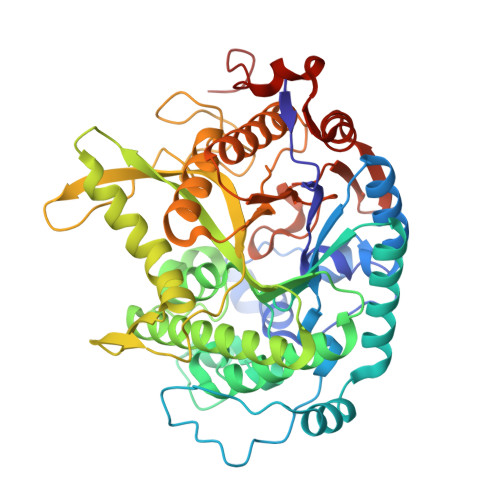Comparative Study and Mutational Analysis of Distinctive Structural Elements of Hyperthermophilic Enzymes.
Leon, M., Isorna, P., Menendez, M., Sanz-Aparicio, J., Polaina, J.(2007) Protein J 26: 435
- PubMed: 17503162
- DOI: https://doi.org/10.1007/s10930-007-9083-2
- Primary Citation of Related Structures:
1UWI - PubMed Abstract:
Comparison of the three-dimensional structure of hyperthermophilic and mesophilic beta-glycosidases shows differences in secondary structure composition. The enzymes from hyperthermophilic archaea have a significantly larger number of beta-strands arranged in supernumerary beta-sheets compared to mesophilic enzymes from bacteria and other organisms. Amino acid replacements designed to alter the structure of the supernumerary beta-strands were introduced by site directed mutagenesis into the sequence encoding the beta-glycosidase from Sulfolobus solfataricus. Most of the replacements caused almost complete loss of activity but some yielded enzyme variants whose activities were affected specifically at higher temperatures. Far-UV CD spectra recorded as a function of temperature for both wild type beta-glycosidase and mutant V349G, one of the mutants with reduced activity at higher temperatures, were similar, showing that the protein structure of the mutant was stable at the highest temperatures assayed. The properties of mutant V349G show a difference between thermostability (stability of the protein structure at high temperatures) and thermophilicity (optimal activity at high temperatures).
Organizational Affiliation:
Instituto de Agroquímica y Tecnología de Alimentos, Consejo Superior de Investigaciones Científicas, Apdo. de Correos 73, Burjassot, Valencia, E46100, Spain.


















